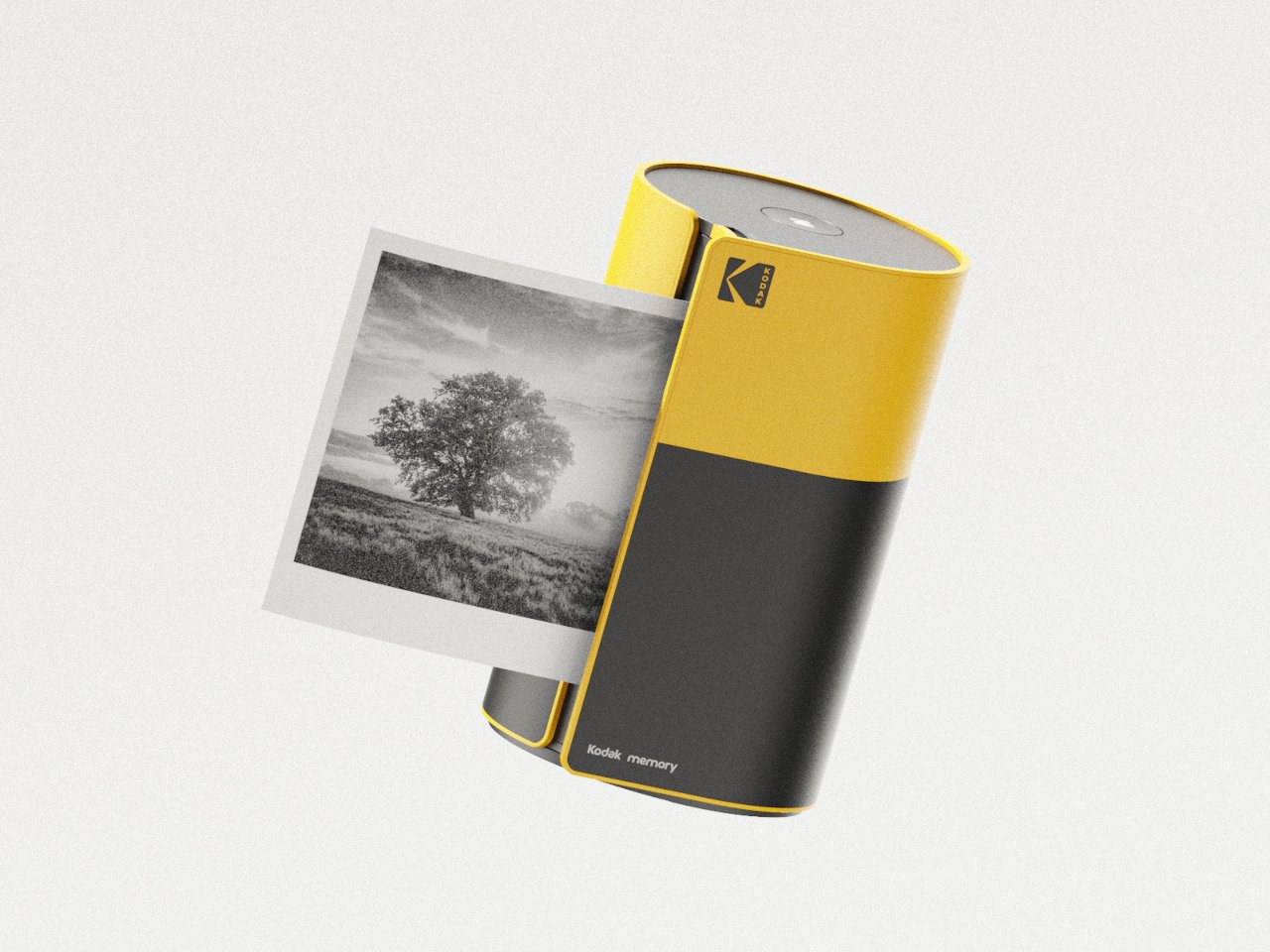The enduring appeal of analog photography lies not just in the aesthetic of film grain or vintage colors, but in the tactile rituals that made capturing and sharing memories feel special. Loading film, advancing frames, and waiting for prints created anticipation and intention that digital photography often lacks. Even in our smartphone-dominated world, many people crave the physical satisfaction of holding printed photos and sharing tangible moments with friends and family.
The Kodak Memory concept reimagines how we might bridge this gap between digital convenience and analog delight. This speculative thermal printer design draws inspiration from classic film canisters, proposing a playful device that transforms digital photos into physical prints while celebrating the visual language and emotional resonance of photography’s golden age.
Designers: Minsu Kim, Seojin Baek, Yeonju Do
The design immediately catches your attention with its unmistakable film canister shape, complete with the iconic yellow and black color scheme that instantly evokes memories of loading cameras and anticipating developed photos. The cylindrical body features rounded caps and tactile ribbing that invite handling, while a faux film leader emerging from one end cleverly disguises the paper output slot.
The user experience prioritizes simplicity and ritual over complexity. A single round button on top controls the printing process, while thermal paper loads internally like film in a canister. The black and white thermal printing eliminates the need for ink cartridges, making the device low-maintenance and perfect for spontaneous memory sharing wherever you happen to be.
Of course, the nostalgic form factor comes with practical trade-offs. The cylindrical shape, while charming and instantly recognizable, is less compact and pocket-friendly than typical rectangular portable printers. You’d need to consider bag space more carefully, and the round form might roll around on desks or tables in ways that boxy printers wouldn’t.
The concept taps into something deeper than just aesthetic nostalgia. By making the act of printing feel special again, the design encourages users to be more intentional about which digital moments deserve physical form. The thermal prints would likely resemble classic photo booth strips or instant camera outputs, creating keepsakes that feel meaningful rather than disposable.
That said, the limitations reflect both the thermal printing technology and the concept’s speculative nature. Black and white output might feel restrictive for users accustomed to full-color digital photos, and the technical details around connectivity, battery life, and app integration remain undefined since this exists purely as a design exploration.
The film canister inspiration works on multiple levels, referencing not just the visual language of photography but also the anticipation and care that went into each shot when film was precious. The concept suggests that even in an age of unlimited digital storage, there’s value in slowing down and choosing which moments deserve the permanence of print.
You’ll notice how this concept challenges assumptions about what portable printers should look like, prioritizing emotional connection and visual storytelling over pure efficiency. The design proves that even utilitarian devices can become conversation starters and objects of delight when approached with creativity and cultural awareness.
The Kodak Memory concept demonstrates how thoughtful design can transform mundane technology into something that sparks joy and meaningful interaction. You can see how this approach might influence other everyday devices, suggesting possibilities for products that celebrate our relationship with technology rather than simply serving functional needs.
The post A Film-Inspired Thermal Printer Concept Brings Analog Joy to Digital Memories first appeared on Yanko Design.

